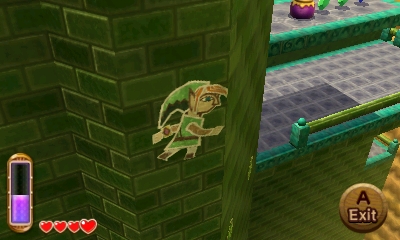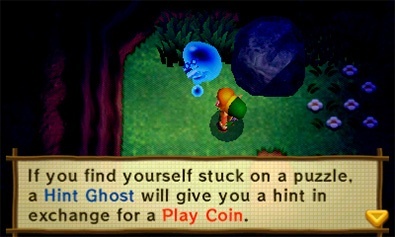Nintendo is a company built on a few essential video game formulas that have worked well enough, over and over again, for decades. Through the pop culture ubiquity of their franchises, Nintendo has defined the bare basics of what a “video game” is to multitudes of fans. The latest installment of The Legend of Zelda, Link Between Worlds demonstrates once again that when we tire of innovative game mechanics, engaging storylines, and complex graphics of whatever the latest studios are making, Nintendo will still be making gaming comfort food for us to come home to.
The 27th year of Our Hyrulian Lady brings shiny new graphics capabilities to a game that remains essentially the same as it ever was. Responsible for so many first formative gaming experiences, LoZ calls out to gamers to reconnect with that original sense of wonder, adventure, and mystery. We know what we want, and what we want is exactly the same thing we played when we were 12. Link Between Worlds delivers it in droves.

Hyrule, a land of such cyclical history & never-changing fashions that old castle artwork acts as your quest starter guide.
Link Between Worlds offers a solid re-hash of the traditional LoZ experience, with a splash of paint and just enough new gadgets to make it different. The story, basic characters and landmarks of Hyrule are all rote, and hold a particular parallel to the SNES Link to the Past, wherein Link is drawn into a parallel world from which he must travel back and forth to reach dungeons and save the triforce and princess. The first birds-eye game using button controls since Minish Cap in 2004, Link Between Worlds returns to what could be called LoZ’s classic gameplay mode.
The last handheld LoZ games Nintendo put out were Phantom Hourglass and Spirit Tracks for the Nintendo DS. These strange cousins to Wind Waker used the new sensors and innovations of the DS to gimmicky ends – puzzles occasionally requiring you to shout at or blow on the device – and broke up the comfortable familiarity of button gameplay with all pen-tool navigation (though in turn they offered engaging new characterizations, worldmaps, and storylines). In contrast, Link Between Worlds’ use of the new 3D is engaging and fully incorporated into the game. Dungeons and puzzles make use of multi-level areas, stairs and underpasses, even offering a cavern or two with free-fall platforming. A new power allows you to become a two-dimensional painting that can move around on most walls, adding a new level of creative puzzle-solving, with a joking nod at the 3D capabilities of the new system.

My favorite detail: the Lantern item shows up hanging on your painting’s belt when you have it equipped.
There are a variety of new and old secondary items, some familiar and some less so, but more interesting than their details are the specifics is how they are delivered to you. A strange character named Ravio jovially takes over your house and rents to you his array of weapons and tools. You can rent as many as you can afford, but Ravio comes to claim them if you get a Game Over. This rental setup allows a new, non-linear dungeon setup. You can visit each set of dungeons in whatever order you choose, as opposed to the classic setup wherein each dungeon yields one item that allows you to clear the obstacles preventing you from reaching the next dungeon and next part of the story. Combined with the ubiquity of save points and fast-travel between them, the new story structure produces a fast paced game that avoids the aimless wandering that was a feature of many of its predecessors. Eventually you can buy all the items for steep steep prices from Ravio, solidifying your arsenal to take on the multi-item challenges of the final dungeon.
Following what appears to be a trend in Nintendo’s games for the 3DS (rather than the newfound skill in gaming I’d like to believe I’ve gained,) Link Between Worlds is a pretty easy ride. Hearts, jars, and fairies are plentiful, and power-up items are easier to find than ever. The usual host of egregiously difficult mini-games is optional, and boss battles only vaguely require strategy beyond aggressive button mashing. There is even an item that allows you to find hint ghosts if you become stuck on a puzzle, but they mostly seem to be placed to explain basics to the uninitiated – how to move boulders, how to bomb a wall, etc. The easy level seems like a reasonable decision by Nintendo to hold the interest of the kind of young and entry-level gamers who prefer handhelds. However, if you enjoy difficulty, you might want to have a friend play the game through and then hand it off once winning the game gives you access to the ostensibly harder “Hero Mode”.
Link Between Worlds offers a solid game for enthusiasts of the Legend of Zelda franchise, particularly the SNES and Game Boy models. This installment is enjoyable, well-constructed, and makes good use the new technology of the 3DS. Just don’t expect any surprises.





